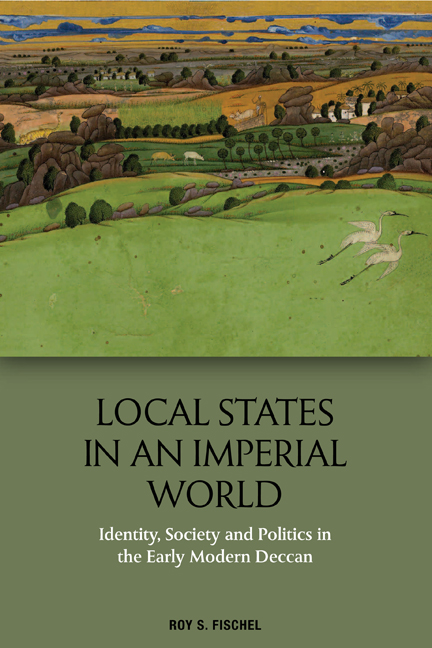Book contents
- Frontmatter
- Contents
- List of Illustrations and Tables
- Note on Transliteration
- Acknowledgements
- Introduction
- 1 Mapping the Deccan
- 2 The Sultanates and the Deccan
- 3 Foreigners, Locals and the World
- 4 Locality, Vernacular and Political Language
- 5 Limitations of the Deccani System
- 6 Conclusion: Hoopoes and Falcons
- Bibliography
- Index
2 - The Sultanates and the Deccan
Published online by Cambridge University Press: 26 September 2020
- Frontmatter
- Contents
- List of Illustrations and Tables
- Note on Transliteration
- Acknowledgements
- Introduction
- 1 Mapping the Deccan
- 2 The Sultanates and the Deccan
- 3 Foreigners, Locals and the World
- 4 Locality, Vernacular and Political Language
- 5 Limitations of the Deccani System
- 6 Conclusion: Hoopoes and Falcons
- Bibliography
- Index
Summary
The five Deccan sultanates, as their name suggests, were identified by the region within which they emerged. As successors to the erstwhile Bahmani sultanate, their centres of power were located on the plateau north of the Krishna. In their courts emerged a shared identity group that was most associated with, and committed to, their political system, even if they did not manage to monopolise political power. Furthermore, their perspective was largely responsible for the definition of the political landscape of the Deccan. In Persian historiography and in the modern historiography that followed, this group came to be known as Deccanis.
While central to the political, social and cultural life of the sultanates, the Deccanis were not a coherent group, nor is it simple to trace their genesis. Originating in a parallel process of migration, assimilation and conversion, the Deccanis emerged as a group defined first and foremost politically. But political identification is only one part of the picture; they also developed cultural and linguistic identities. Combined with territorial consciousness, the Deccanis came to mark their environment as a meaningful space along the familiar lines of the political language in south India. Of course, this identity did not uproot other identities in the region, which were related to other linguistic, social or religious groups. Rather, it joined them, adding yet another layer to the complex social and political setting of the region. This, in turn, complicated the spatial division of the Deccan, marking certain regions as central and others as peripheral.
In this chapter, I suggest that ideas of the local, peripheral and foreign were of great importance in determining social and political relations within the sultanates and their response to challenges from the outside. This process, however, requires some background. While not aiming at systematically discussing the five dynasties with the complicated rela-tionship between them – elaborate accounts of the political history of the three main sultanates of Ahmadnagar, Bijapur and Golkonda are widely available – the main purpose here is to sketch an outline of their history to lay the ground for further investigation.
The Political Setting: From Bahmanis to Deccan Sultanates
During the reign of Muhammad III (r. 1463–82), the Bahmani sultanate reached the height of its power.
- Type
- Chapter
- Information
- Local States in an Imperial WorldIdentity, Society and Politics in the Early Modern Deccan, pp. 66 - 105Publisher: Edinburgh University PressPrint publication year: 2020



